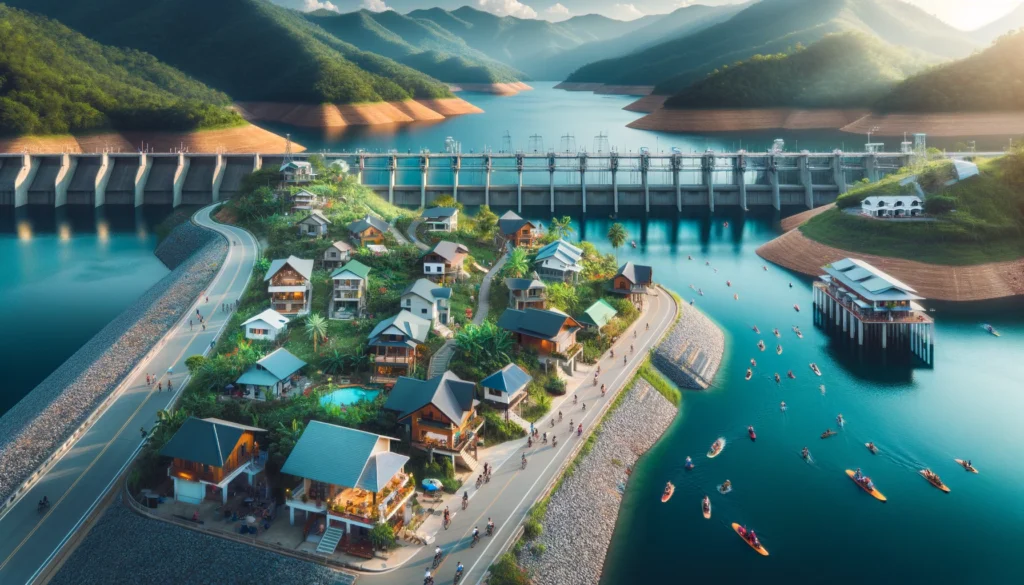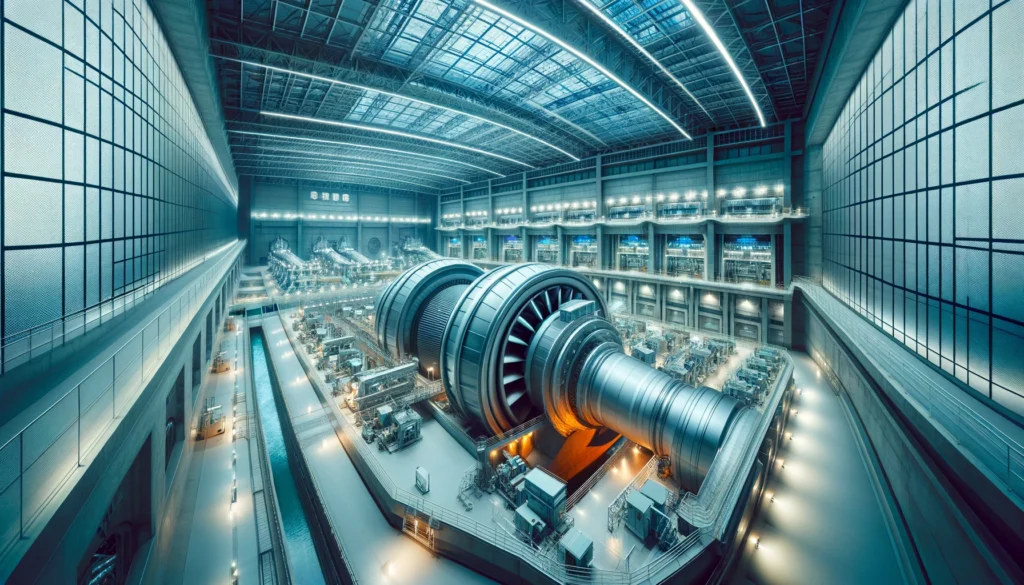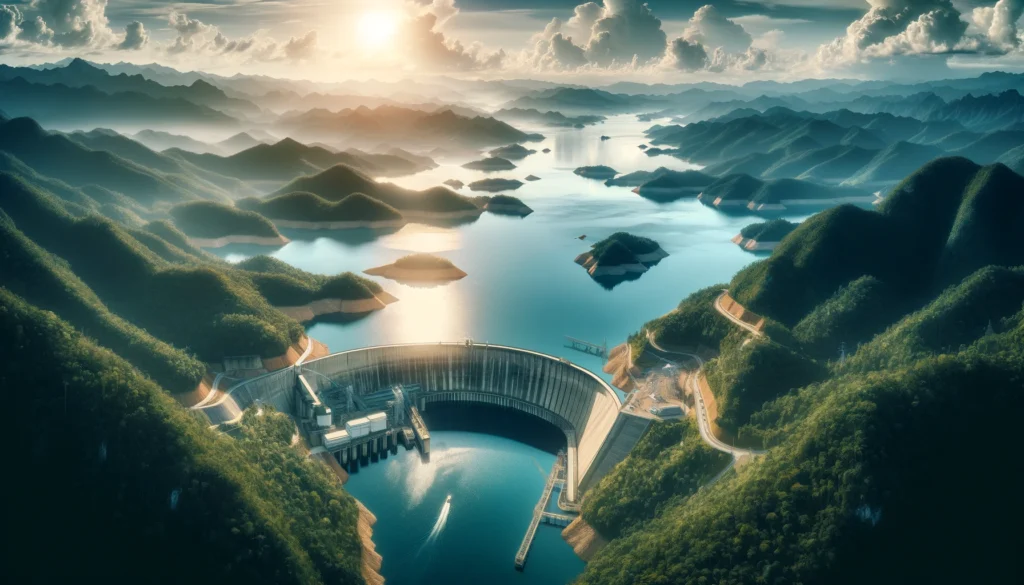Hydropower, one of the oldest forms of renewable energy, harnesses the power of water to generate electricity. From ancient water mills to modern hydroelectric dams, humans have long utilized this abundant natural resource to meet their energy needs. In recent years, as concerns over climate change and sustainability have grown, hydropower has emerged as a promising solution to reduce reliance on fossil fuels and mitigate environmental impact. This article explores the potential of hydropower and its role in the transition towards a more sustainable energy future.
Table Of Content
We invite you to read: “The Integration of Wind Energy with Other Renewable Energy Sources”

Understanding Hydropower
Hydropower works by converting the kinetic energy of flowing water into electricity. This process typically involves the construction of dams or diversion structures to control the flow of water and drive turbines connected to generators. The amount of electricity produced depends on factors such as the volume of water, the height of the fall (head), and the efficiency of the turbine system.
Types of Hydropower Systems
Conventional Hydropower
Conventional hydropower refers to large-scale installations, such as dams and reservoirs, which can generate significant amounts of electricity. These systems offer reliable and consistent power generation but often face challenges related to environmental impact and displacement of communities.
Run-of-River Hydropower
Unlike conventional hydropower, run-of-river systems do not require large dams or reservoirs. Instead, they utilize the natural flow of rivers to generate electricity, minimizing disruption to ecosystems and communities. While they may have lower environmental impact, their power output can fluctuate depending on seasonal variations in water flow.
Pumped Storage Hydropower
Pumped storage hydropower facilities store energy by pumping water from a lower reservoir to a higher elevation during times of low electricity demand. When demand rises, the water is released back down through turbines to generate electricity. This technology allows for efficient energy storage and helps stabilize the grid by providing backup power during peak demand periods.
Advantages of Hydropower
Renewable and Sustainable
Hydropower relies on the natural water cycle, making it a renewable and sustainable energy source. Unlike fossil fuels, which emit greenhouse gases and contribute to climate change, hydropower produces minimal carbon emissions, helping to combat global warming.
We invite you to read: “Renewable Energy 2.0: A Comparison of Hydro and Wind Power Technologies”

Reliable and Cost-Effective
Hydropower offers a reliable source of electricity, with hydropower plants typically operating at high efficiency rates and requiring minimal maintenance. Once infrastructure is in place, hydropower can be cost-effective over the long term, providing stable electricity prices and reducing reliance on imported fossil fuels.
Multipurpose Benefits
In addition to electricity generation, hydropower projects can provide a range of other benefits, including flood control, irrigation, and recreational opportunities. Dams and reservoirs can also serve as water storage facilities, helping to manage water resources in times of drought or water scarcity.
Challenges and Considerations
Environmental Impact
While hydropower is often touted as a clean energy source, large-scale dams and reservoirs can have significant environmental impacts. These include habitat destruction, alteration of river ecosystems, and disruption of fish migration patterns. Careful planning and mitigation measures are necessary to minimize these effects.
Social and Cultural Impacts
The construction of hydropower projects can lead to the displacement of communities and disruption of traditional livelihoods. Indigenous peoples and local communities often bear the brunt of these impacts, highlighting the importance of inclusive decision-making processes and equitable benefit-sharing arrangements.
Climate Change Vulnerability
Climate change can affect water availability and flow patterns, potentially impacting the reliability and performance of hydropower systems. Changes in precipitation patterns, glacier melt, and seasonal variability may pose challenges for hydropower operators, requiring adaptive management strategies to ensure resilience in the face of a changing climate.
We invite you to read: “China Building World’s Largest Offshore Wind Farm”

Conclusion
Hydropower offers significant potential as a clean, renewable energy source capable of meeting a substantial portion of global electricity demand. Its reliability, cost-effectiveness, and multipurpose benefits make it a valuable asset in the transition towards a more sustainable energy future. However, addressing environmental and social concerns associated with hydropower development is essential to realize its full potential while safeguarding the health of ecosystems and communities. With careful planning, innovation, and collaboration, hydropower can play a crucial role in shaping a greener, more resilient energy landscape for generations to come.
FAQs
What is hydropower?
Hydropower is a renewable energy technology that harnesses the energy of flowing water to generate electricity. It involves the use of dams, turbines, and generators to convert the kinetic energy of water into electrical energy.
How does hydropower work?
Hydropower works by capturing the energy of flowing water and converting it into electricity through turbines and generators. Dams or diversion structures control the flow of water, creating a height differential (head) that drives the turbines.
What are the different types of hydropower systems?
There are several types of hydropower systems, including conventional hydropower with dams and reservoirs, run-of-river hydropower that utilizes natural river flow, and pumped storage hydropower for energy storage and grid stability.
What are the advantages of hydropower?
Hydropower is renewable, sustainable, and emits minimal greenhouse gases. It offers reliable and cost-effective electricity generation, with additional benefits such as flood control, irrigation, and recreation.
What are the challenges associated with hydropower?
Challenges include environmental impacts such as habitat destruction, social and cultural concerns related to community displacement, and vulnerability to climate change-induced water variability.
You May Also Like
- Wind Is Now South Dakota No.1 Electricity Generator
- Wind Energy Turbines History
- Wind Turbines For At Home: Benefits and Challenges
- Wind Energy: The Unknown Facts
- The Biggest Wind Projects Running Now

